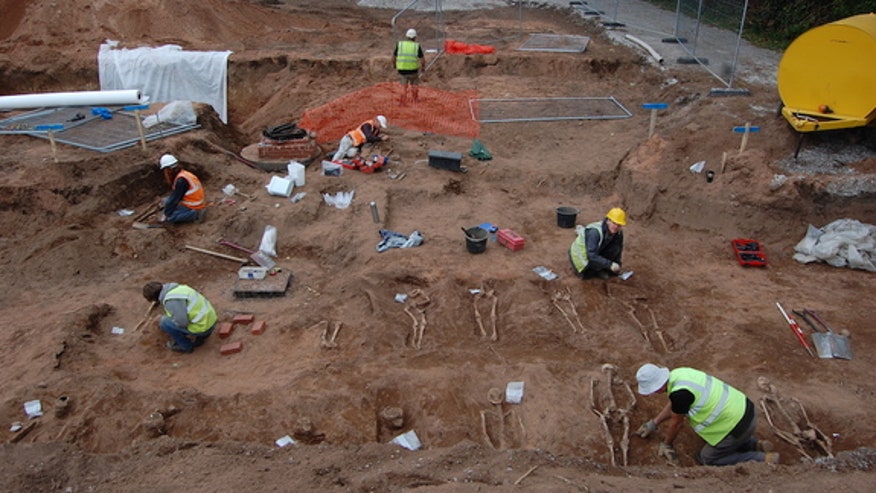The skeletal remains of about 50 medieval individuals have been discovered in shallow graves near the pilgrimage site of a famous seventh-century saint in England.
The human remains, which have been exhumed, may help archaeologists learn more about the medieval era, according to Archaeology Warwickshire, an archaeology and excavation firm. The company plans to study each skeleton to determine its sex and approximate age, and to identify evidence of injuries or diseases preserved in the bones, said Stuart Palmer, the business manager of Archaeology Warwickshire.
"The teeth will give us a lot of information about diet, as well," Palmer told Live Science. "There's a potential for more in-depth study, but we first have to assess the quality of material to see if it's worth trying to do." [See Photos of the Medieval Graves near Lichfield Cathedral]
Archaeologists with the firm discovered the burials in early August. They received a commission to survey the land around an almshouse, located outside the gates of the medieval city of Lichfield, located in the West Midlands. During medieval times, pilgrims traveled to Lichfield to visit its famed three-spired cathedral from the 12th century, which held the tomb of St. Chad.
Lichfield closed its city gates every night about 9 p.m., and pilgrims who arrived after that time would have stayed in the almshouse, called the Hospital of St. John Baptist without the Barrs (the barrs referred to the city gates).
Archaeology Warwickshire surveyed the grounds around the almshouse this summer, just before a planned expansion of the compound. The archaeologists expected to find some graves but "we weren't really expecting the volume and quantity that we got," Palmer said.

0 komentar:
Posting Komentar